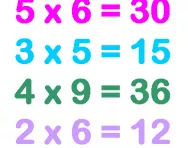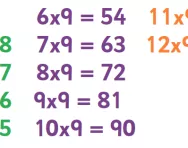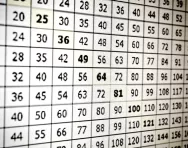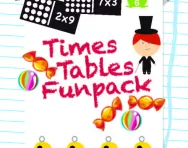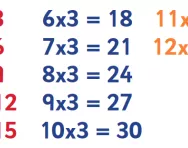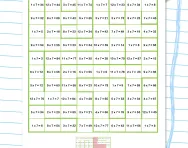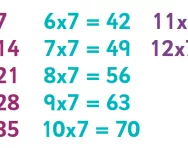Important update from TheSchoolRun
For the past 13 years, TheSchoolRun has been run by a small team of mums working from home, dedicated to providing quality educational resources to primary school parents. Unfortunately, rising supplier costs and falling revenue have made it impossible for us to continue operating, and we’ve had to make the difficult decision to close. The good news: We’ve arranged for another educational provider to take over many of our resources. These will be hosted on a new portal, where the content will be updated and expanded to support your child’s learning.
What this means for subscribers:
- Your subscription is still active, and for now, you can keep using the website as normal — just log in with your usual details to access all our articles and resources*.
- In a few months, all resources will move to the new portal. You’ll continue to have access there until your subscription ends. We’ll send you full details nearer the time.
- As a thank you for your support, we’ll also be sending you 16 primary school eBooks (worth £108.84) to download and keep.
A few changes to be aware of:
- The Learning Journey weekly email has ended, but your child’s plan will still be updated on your dashboard each Monday. Just log in to see the recommended worksheets.
- The 11+ weekly emails have now ended. We sent you all the remaining emails in the series at the end of March — please check your inbox (and spam folder) if you haven’t seen them. You can also follow the full programme here: 11+ Learning Journey.
If you have any questions, please contact us at [email protected]. Thank you for being part of our journey it’s been a privilege to support your family’s learning.
*If you need to reset your password, it will still work as usual. Please check your spam folder if the reset email doesn’t appear in your inbox.
Teachers’ tricks for learning times tables

Visualise the numbers
Children need to practise counting in sequences before they can really understand times tables.
In class your child’s teacher might use Unifix, connecting coloured cubes which help children make patterns, count and solve mathematical problems. You can buy a set of Unifix cubes yourself and get your child to make ‘sticks’ of numbers; for example, if they are learning their 3x table, they will need to make a stick of 3, one of 6, 9, 12 and so on. They can then point at the correct stick as they count up in threes. Seeing the numbers as visual quantities will help to embed the correct sequence in their minds.
As an alternative to mathematical cubes, you can use building blocks (all the same size) or get your child to colour in squares on graph paper.
Colour in a number square
Print off a hundred number square – basically a 10 by 10 grid with the numbers 1 to 100 on it. If your child is learning the 4x table, get them to count in 4s, colouring each number as they go. This will help them to start memorising the answers in the 4x table. They will also find that a pattern will ‘miraculously’ appear!
You can also download a free, colour-coded multiplication square that goes up to 12x12 to help your child spot multiplication number patterns.
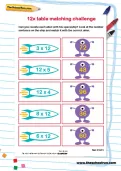
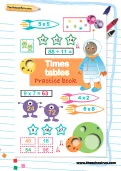
Get FREE Times Tables Resources
- Printable and interactive worksheets
- Practice workbook
- Games pack
Play times tables games
Using coloured card, you can make simple games to help your child learn their times tables.
For instance, cut some card into 24 identical pieces, and write out all the questions for one times table on 12 of the cards. Then write the answers on the other 12 cards. Spread them out on a table and see if your child can match them all up correctly. Once they are more confident, time them with a stopwatch. See if they can try to beat their own record each time they do it!
Use speed grids
Using a speed grid is a good way to evaluate which times tables your child still needs to learn.
Download and print a blank 10 x 10 times tables grid of squares from TheSchoolRun. Now fill the top row with any one-digit numbers and fill the far left-hand column with any one-digit numbers. Explain to your child that they need to fill the whole grid by multiplying each of the numbers in the left-hand column by each of the numbers in the top row. Once they get more confident, try timing them to see if it increases their speed.
Single out the tricky one!
We all have a few particular times table questions that we get stuck on. If your child finds a particular equation difficult, for example 7 x 8 = 56, get them to ‘single it out’ by drawing it in bubble writing with marker pens on a big piece of paper. Stick it up in their room so they see it every time they walk in. You could get them to say it in a silly voice every time they see it, which should help them to remember it even better!
Talk about factors and multiples
Don’t forget to use correct times table vocabulary when you talk to your child (they will need to know the right language in the SATs).
First of all, show them a times table number sentence, such as 6 x 4 = 24. Explain that 6 and 4 are factors of 24, and that 24 is a multiple of 6 and a multiple of 4.
Another good way to demonstrate this is to show the whole 6x table written out and point to all the answers at the end, explaining that all these numbers are multiples of 6. To test your child’s understanding (after they have learnt the times table), give them this times tables worksheet, which requires them to identify the numbers they think are multiples of 6.
